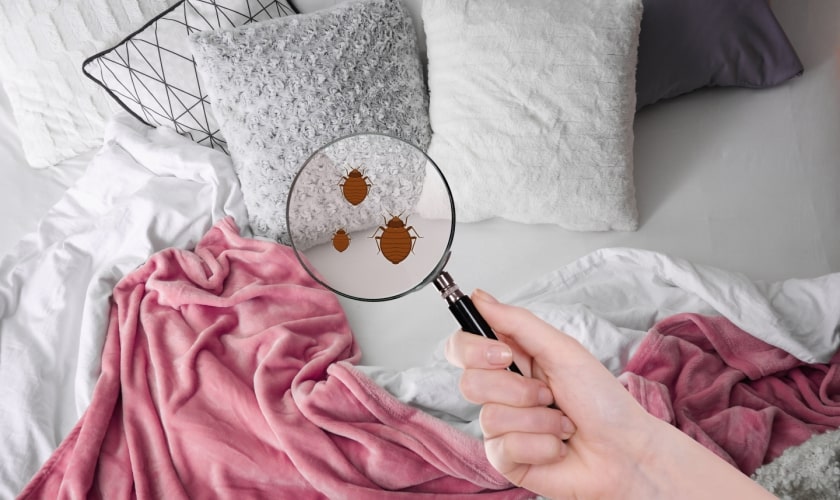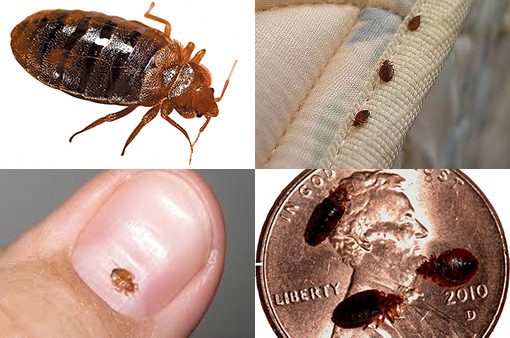Effective Kings Bug Control Cincinnati Ohio: Reputable Solutions
Types of Bug Control: Which Technique Is Right for Your Invasion?
When encountered with a pest invasion, the option of a suitable method for parasite control is important in effectively handling the scenario. By exploring the numerous kinds of pest control approaches offered, people can make informed decisions customized to their unique scenarios, ensuring a much more reliable and lasting outcome in bug eradication.
Chemical Insect Control
Chemical bug control involves making use of artificial or normally acquired chemicals to manage and get rid of pest populations successfully. This approach is commonly utilized in agriculture, forestry, and residential setups to combat a vast array of pests, including rats, weeds, and insects. Using chemical pesticides can supply fast and targeted solutions to pest invasions, making it a prominent option for lots of individuals and services.
Among the vital benefits of chemical parasite control is its capacity to promptly remove parasites, reducing the risk of damage to plants, residential property, and human wellness. By utilizing specific chemicals that target particular bugs, this method can effectively manage invasions while reducing harm to useful organisms and the environment when applied properly.
However, using chemical parasite control additionally increases problems concerning possible unfavorable effects on non-target varieties, water resources, and human health and wellness. It is vital to comply with safety standards, apply chemicals responsibly, and consider alternative parasite control techniques to reduce these threats and make sure lasting bug management techniques.
Biological Parasite Control
Organic bug control, also known as biocontrol, makes use of living microorganisms to handle and lower pest populaces normally. By utilizing the parasite's all-natural killers or virus, organic bug control supplies a sustainable and ecologically friendly remedy to pest monitoring.

Mechanical Pest Control
Using hand-operated and physical techniques to handle bug populations, mechanical bug control provides an alternate approach that does not count on making use of living organisms or synthetic chemicals. This method entails making use of barriers, traps, or various other tools to physically deter or eliminate parasites. By blocking pest entrance points or establishing traps to capture them, mechanical insect control can effectively decrease problems without presenting chemicals right into the setting.
One common example of mechanical pest control is using mesh displays on windows and doors to stop bugs from getting in structures. This easy yet efficient approach serves as a physical barrier, keeping pests out while permitting for appropriate ventilation. Furthermore, devices like mousetraps, fly swatters, and ultrasonic repellents fall under the mechanical insect control group.
While mechanical bug control methods can be labor-intensive and need routine tracking and maintenance, they use a environmentally pleasant and sustainable remedy for managing bug problems. By integrating different mechanical techniques, homeowner can create a comprehensive pest control strategy that lessens dependence on chemical pesticides.
Physical Insect Control

Some common physical pest control techniques include making use of barriers such as internet or displays to avoid pest entry, traps to capture and get rid of pests, and hand-picking to physically get rid of bugs from plants or frameworks. Furthermore, techniques like warm treatments can be used to regulate insects like bed insects by elevating the temperature level to degrees that are dangerous to the bugs.
Physical insect control is specifically helpful in integrated parasite management (IPM) approaches, where numerous pest control methods are combined for effective parasite administration while decreasing the use of chemicals. By utilizing physical insect control techniques, people can efficiently resolve parasite invasions with minimal ecological influence.
Integrated Parasite Management
When implementing physical insect control techniques as component of pest administration techniques, Integrated Insect Management (IPM) becomes an extensive method that leverages numerous methods to effectively regulate home pest protection pest populaces. IPM concentrates on lasting prevention of parasites through a mix of organic, cultural, physical, and chemical tools tailored to specific parasite issues. By integrating numerous control strategies, IPM aims to minimize the dangers related to bugs while additionally lowering dependence on chemical options.
One secret facet of IPM is the focus on surveillance and assessing pest populations to identify one of the most ideal control methods. This proactive method permits very early treatment and targeted strategies, bring about more effective parasite administration. Additionally, IPM advertises environmentally friendly methods by prioritizing non-chemical control methods and just using chemicals as a last resource.
Verdict

By using the parasite's natural killers or pathogens, organic great post to read insect control supplies a sustainable and eco friendly remedy to pest administration. - Kings active termite control pest control Cincinnati Ohio
Making use of physical and hands-on methods to take care of bug populaces, mechanical pest control offers an alternate technique that does not count on the usage of living organisms or artificial chemicals.A reliable approach to managing bug populations without relying on chemical or organic methods entails the use of physical pest control strategies.When carrying out physical pest control approaches as part of parasite administration methods, Integrated Parasite Management (IPM) emerges as an extensive approach that leverages various methods to efficiently manage pest populaces. Chemical insect control involves the use of chemicals, biological bug control makes use of all-natural predators, mechanical bug control entails physical obstacles, physical insect control includes trapping or eliminating parasites, and integrated parasite administration incorporates several techniques for an all natural strategy to pest control.